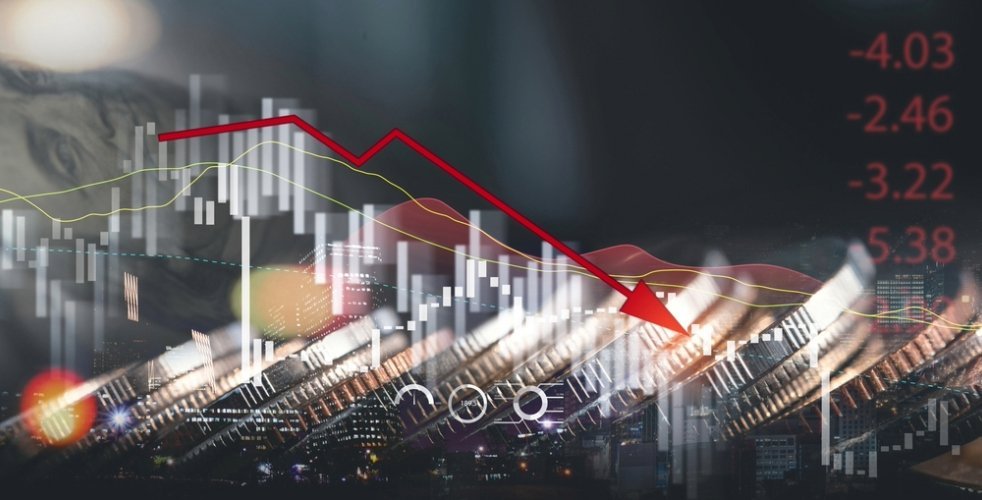
If you’re going to be a successful investor, then stocks are going to play a major role in your portfolio. This is because stocks offer the highest so-called “risk premium” or compensation for bearing risk. Over the last couple of hundred years, stocks have outperformed the 2nd highest performing asset class (bonds) by a factor of over 600 times.
But as we all know, investing in the stock market can be a wild ride. That’s why you need to have a lens through which you can understand and interpret the market’s behavior. Once you have a feel for how markets behave through various portions of the business cycle, you’ll feel much more comfortable with the general ebb and flow. And that will allow you to ride each bull market to a wonderful and prosperous retirement, without sacrificing any of that precious beauty sleep.
Setting the Stage
We already know that markets are biased to the upside. Over long periods of time (5-10 years) stocks, as well as the market as a whole, always rise. This might as well be considered a “law” of the markets, because over hundreds of years this phenomenon has never been disproven (recall that even laws such as gravity are not laws because they have been proven, but because they’ve never been disproven).
But anyone who’s been around for longer than a couple of decades knows that stocks can lose a lot of value quickly. These periods, when stock prices are falling, can be classified into two types of declines: corrections, and bear markets. Understanding the difference between these is critical, because the former represent minor speed bumps on the way to higher prices, while the latter can wreck your entire portfolio and set you back years from reaching your retirement goals.
In order to understand the difference, we first need to familiarize ourselves with what’s known as the Primary Trend.
What is the Primary Trend?
The term Primary Trend evolved from one of the oldest and most widespread forms of technical analysis – Dow Theory. Originally proposed by Charles Dow (founder of Dow Jones & Company and the Wall Street Journal) the Primary Trend of a market is the main, long-term direction in which stock prices are moving.
We know that stocks never rise or fall in a straight line. Stocks will move one way, only to retrace part of that move, before turning around again and heading in the original direction. Sometimes these back and forth moves can happen from one day or week to the next, sometimes from one hour or minute to the next. But over time, stocks will generally move either higher or lower; this is known as the Primary Trend of the market.
There are two types of Primary Trends that appear in the market: bullish primary trends, and bearish primary trends. A bullish primary trend occurs when stock prices rise for extended periods of time, while a bearish primary trend is a period when stock prices move lower month after month, sometimes for years.
We can see examples of these in the two charts below. On the left, we have the bullish primary trend that began in 2009 and continues to this day, and on the right we can see the bearish primary trend that took hold during the financial crisis.

Obviously, owning stocks when the primary trend is bullish will be very rewarding, while owning stocks during a bearish primary trend will take you straight to the poor house.
Most people who are averse to owning stocks became that way because they suffered through a bearish primary trend. This can be an excruciatingly painful experience, as stocks can and have lost over half their value during these treacherous periods. The last two examples we had of bearish primary trends were during the financial crisis (pictured above) and the dot-com collapse.
Primary Trends and the Business Cycle
Many investors do not recognize this, but there is a clear pattern between the direction of the primary trend of the market, and the health of our economy. When our economy is expanding (growing) it means that the level of economic activity is increasing; jobs are being created and there is an increase in both spending as well as consumption of goods and services.
Since all corporations ultimately sell some type of good or service, periods when the economy is expanding typically translate into increased sales and profits. Since a share of stock is really just a share in a corporation’s future earnings stream, this means that stock prices tend to rise when the economy is growing. Therefore, during economic expansions, the primary trend of the market is bullish. That is, stock prices tend to rise for extended periods of time.
As an example, we’ve been enjoying an economic expansion since the last recession ended in June of 2009. Since then, the market – as measured by the S&P 500, has more than tripled. A growing economy has led to increased levels of commerce, which has resulted in rising levels of corporate profits, and thus rising stock prices.
Generally speaking, our economy grows slowly over time, but these periods of growth are interrupted from time to time by recessions, otherwise known as economic contractions. During a recession, we see the opposite of what happens during an economic expansion: Economic activity slows, corporate profits collapse, and therefore share prices crater. Owning stocks during a recession is an absolutely terrible idea, as share prices can and often do lose up to half their value. We saw this nine years ago during the financial crisis, and again at the start of the millennia when the dot-com bubble burst.
Corrections vs. Bear Markets
Now that we have a basic understanding of how the stock market behaves with regard to where we are in the business cycle (expansion or contraction), we can address the main topic of this article, which is differentiating between corrections and bear markets.
According to Investopedia, a correction is a “reverse movement, usually negative, of at least 10% in a stock, bond, commodity or index to adjust for an overvaluation.” In reality, that’s a very poor definition of a correction, so we’re going to elaborate.
To begin, ignore that 10% figure. Corrections come in all shapes and sizes, we can have a 3% correction, a 5% correction, or even a 15-20% correction. What a correction represents is a short-term pullback in stock prices due to the fact that they’ve climbed too far, too fast. But perhaps the most critical differentiator between a correction and a bear market is this: Corrections occur when the Primary Trend of the market is bullish, while bear markets occur when the Primary Trend of the market is bearish.
If you’re paying close attention, then you should also recognize that corrections will nearly always occur during economic expansions, while bear markets are those vicious periods of falling prices that occur in sync with economic recessions.
How to Navigate Corrections and Bear Markets
Once you understand the difference between corrections and bear markets, inferring how to navigate them from an investment perspective becomes straightforward. We can summarize it like this: During an economic expansion, when the primary trend of the market is bullish, nearly all price declines in the stock market will be corrections – they’ll be temporary pullbacks due to stocks having risen too quickly – and thus, we should stay invested in stocks through these corrections.
The logic here is simple. When the economy is expanding, and the primary trend is bullish, we know that corporate profits will continue to rise and thus share prices will continue to climb to new highs. As mentioned before, stock prices never move up or down in a straight line. Every rally is met by either a period of consolidation – where prices show little movement in either direction, or a correction – where stock prices fall a modest amount to get back toward their longer-term trend.
Bear markets, on the other hand, are a completely different animal, and bear markets have the potential to quite literally destroy your portfolio. Thus, recognizing when the primary trend of the market has turned bearish (due to a faltering or contracting economy) is absolutely critical to protecting your wealth. As you can probably imagine, most of our time here at Model Investing is spent analyzing the economy and markets to make a determination of whether we’re in a bullish or bearish primary trend.
Much of the old-school financial advice out there (remnants from before the days of modern computing and analysis) suggests that investors should “buy and hold” stocks, making adjustments only for age. This outdated approach to investing, known as Strategic Asset Allocation, has been thoroughly debunked, but many retail investors do not recognize this, nor understand what this means for their portfolios. Time for some enlightenment …
When you look back at the history of the stock market, you’ll find that during economic recessions, when the primary trend of the market turns bearish, stocks have a habit of losing half or more of their value. Anyone who thinks it’s a good idea to patiently hold onto stocks while they fall precipitously in value has us baffled. Think about it, if your stock portfolio loses half its value, you have to generate a 100% return just to get back to even. Isn’t it a better idea to simply recognize those deteriorating conditions and move your portfolio to safety?
We certainly think so. During bear markets, the proper course of action is to reduce or eliminate your exposure to stocks. Trying to ride through these disastrous periods can wipe out a tremendous amount of wealth, and perhaps worse, it can make you swear off investing or the idea of owning stocks all together.
A Quick Word on “Market Timing”
When we speak with new investors and discuss this notion of investing in sync with the business cycle (owning stocks during economic expansions when the primary trend is bullish and NOT owning stocks when the economy is in recession and the primary trend is bearish) people often consider us “market timers.” Then they will google market timing and read a bunch of studies about how market timing doesn’t work.
The funny thing is, we absolutely agree with these investors, as well as all the data out there that shows market timing is a fool’s game. But here’s the kicker: When the investment community talks about “market timing” they’re referencing short-term market timing. These are typical “traders” who are in and out of positions quickly based on short-term trends or news and geopolitical events, etc.
What we do is VERY different. We only “time” the markets in the sense that we are constantly monitoring the business cycle and health of financial markets. The oscillation between expansions and contractions in our economy generally lasts around 5-10+ years for one cycle. This means that even though we are constantly monitoring month by month for changing conditions, our Investment Models will generally focus on specific asset classes for years at a time.
We are long-term investors whose primary goal is simply to capitalize on the appreciation of stocks during economic expansions, and avoid the catastrophic declines that occur during economic recessions. By identifying the underlying health of our economy and financial markets, we can confidently cruise through market corrections without worry, while making sure that when the inevitable bear market comes, our portfolio has been safely moved to bonds and cash.
We hope this article was helpful in allowing you to differentiate between between corrections and bear markets, but as with all of our articles, feel free to email us with additional questions. General investment questions can always be emailed to support@modelinvesting.com, or submitted using our Contact Us page.
Thanks for reading!

An innovative approach for eaming higher returns with less risk
Download Report (1.2M PDF)You don’t want to look back and know you could’ve done better.
See Pricing



